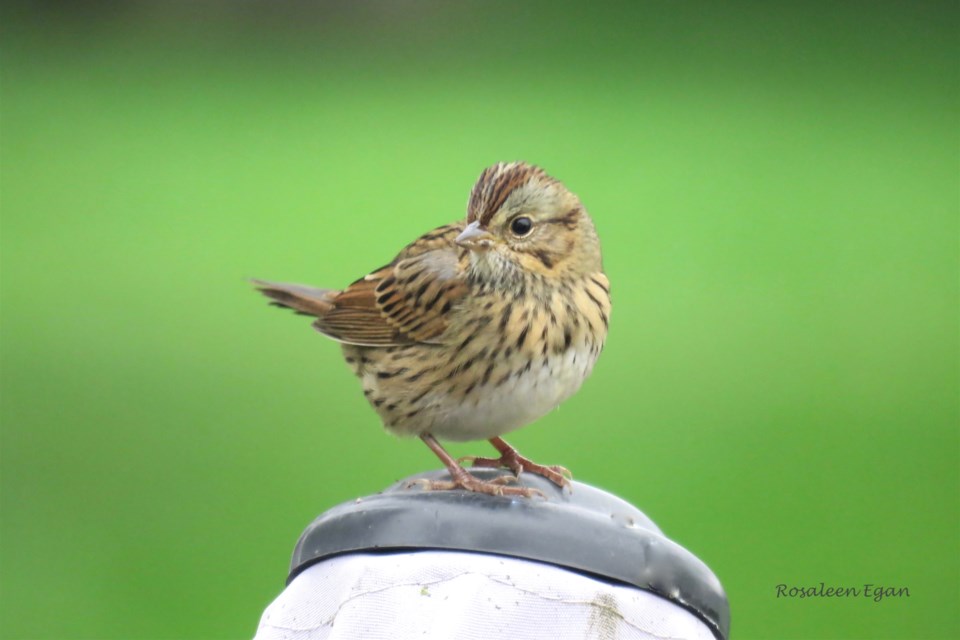Last time, I wrote about White-throated Sparrows after one came to call recently. I was pleased to discover it at the time, and it has reappeared a few times since. Of course, it could be out there when I haven’t noticed it. Paying attention to the birds that come by does reinforce the value of living in the moment.
Happening upon a feathered friend nearby is often just by chance here. I do believe the farm property and the mix of landscape, flora and fauna contributes to the variety of birds with which I have had close encounters.
I mention all of this after a rare sighting of a Lincoln’s Sparrow. As with the White-throated Sparrow there was something unusual about it that made me grab my camera. I did recognize it as a sparrow but I wasn’t sure of its true identity until I was able to match photos with ID information.
“Similar species are Song Sparrow, which lacks buffy chest colouring and has broader chest streaks, and Swamp Sparrow (Melospiza georgiana), which lacks chest streaks entirely as an adult. Smaller in size and proportionally shorter tail than Song Sparrow,” says birdsoftheworld.org.
I was quite taken with the Lincoln’s Sparrow dashing appearance yet it is the wren-like song that Birds of the World says most easily distinguishes from other sparrows. Apparently, it is one of the most musical sparrows.
I am sorry I didn’t hear its song that is described in this way by allaboutbirds.org: Males sing a rich wren-like song of trills, gurgles, and buzzes from exposed perches or tucked inside a shrub.
The site goes on to say, “Each song starts off with two or three bell-like notes before bursting into bubbly trills and gurgles that rapidly change pitch. The song ends with a thin slurred trill as if the bird is running out of steam or perhaps running back into the willow thicket to hide.”
Hiding seems to be Lincoln’s Sparrows forte. It is considered one of the more elusive North American birds. It breeds in the wet meadows of the boreal forest, nesting on the ground. It spends the winter in southern United States, Mexico and Costa Rica.
They do not form flocks to migrate, but allaboutbirds.org says they “often associate with other sparrows, including White-crowned, Song, and Swamp Sparrows. In the winter they are usually solitary, but sometimes forage with small groups of other sparrows.”
“During migration they stop over in fields, forest edges, and other areas with thickets,” says allaboutbirds.org. They primarily eat insects, and find them by scratching the ground under plants and bushes. They like to stay under cover. It was only here for a short time, but it was a sweet time.
This is one example that supports the idea of creating a landscape at home that includes native plants, shrubs, grasses and trees to support the life and migration of such birds. Native pollinators and insects thrive in these conditions and are important in themselves, and in supporting the life of birds.
I have been expanding the space around my home to include more and more native plants. I leave seed heads of coneflowers and others in place for the birds. Stalks left in place can be used by cavity bees, and leaves in around plants provide shelter for a variety of overwintering insects.
I do wonder if this approach helped draw the elusive Lincoln’s Sparrow to my home. And I certainly hope the visit helped nourish it on its journey to warmer climes.
I share experiences of bird visitors to this property with readers every couple of weeks. Until next time, keep your eye to the sky, and look for birds that may come by.
Rosaleen Egan is a freelance journalist, a storyteller, and a playwright. She blogs on her website.



